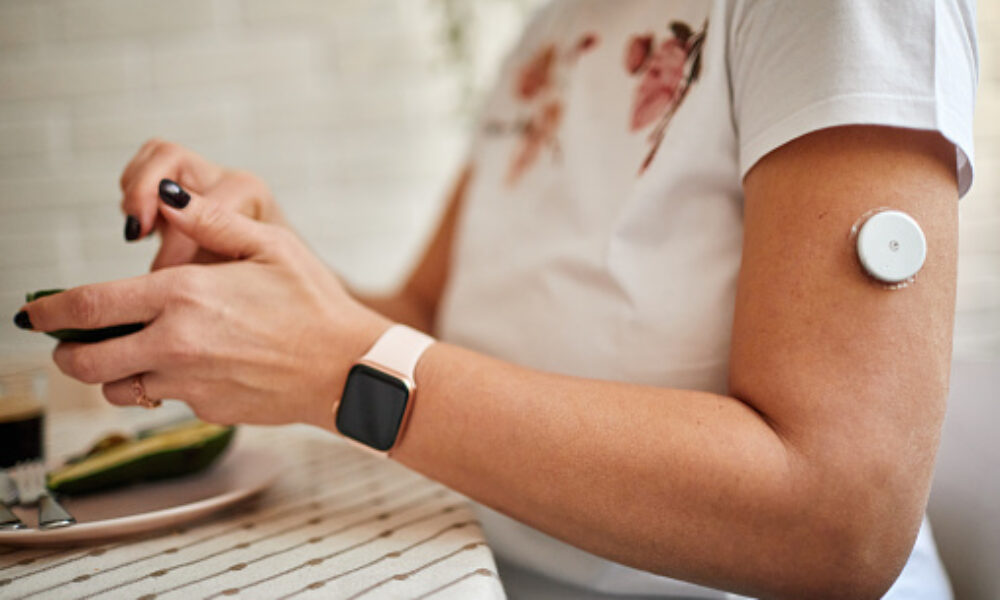Reflecting on the Positive Change for Type 3c Diabetes Patients
After a recent consultation with a diabetes specialist, our Founder & CEO, Ali Stunt, reveals the positive change for Type 3c Diabetes patients that will help with their day-to-day life.

Many of you will not know that following my pancreatic cancer diagnosis, I developed diabetes. Not Type 1 or Type 2, but Type 3c.
This is a difficult form of the disease to control, and I have to admit that I have been finding things a bit tricky of late.
In order to try to keep my blood glucose levels under control, I have been using a Continuous Glucose Monitor (CGM) system, which involves a small sensor attached to my tummy which sends glucose readings direct to an app on my phone. I have set it to alert me should my glucose levels be going too low or too high, so I can take action either by injecting more insulin or topping up my sugars: Jelly Babies are the emergency sugar of choice, currently!

The alerts are particularly useful at night when I may be unaware of my sugar levels going too low (which can be dangerous), and my phone, regardless of any ‘do not disturb’ settings, will ring out a very loud alert, which wakes me (and my husband) up!
The CGM system has revolutionised my own control of my diabetes: I no longer need to take several finger pricks a day, so no more sore fingers, and the technology allows my CGM results to be seen in real-time by my diabetes team; a real bonus when I am discussing the management of my condition.
However, I have had to self-fund this device for more than £150 each month for the past seven years as it was not available on the NHS for my type of diabetes.
I discovered in March that the National Institute of Health and Care Excellence (NICE) Guidelines for Type 1 diabetes (diabetes caused by an autoimmune condition) had been updated to allow all Type 1 diabetes patients to have a CGM available on repeat prescription. So, I contacted one of the diabetes specialists who has been instrumental in pushing this through, Dr Patha Kar OBE. When I asked him if someone with Type 3c diabetes would also be eligible for CGM, he told me to go to page 50 of the NICE NG17 Guidelines, which states:
Some people have insulin insufficiency because of other conditions. The committee noted that these people would get the same care as people with type 1 diabetes, so they should have access to CGM in the same way.
So Dr Kar told me, “The short answer is yes!”
Previously, I had been told by my GP that I would not be eligible to have CGM on the NHS. So, after many months of cancelled appointments due to COVID-19, when I finally got to see my diabetes consultant in person, I went along armed with page 50 of the NG17 NICE Guidelines to have that conversation.
Thankfully, he agreed that I do fit the criteria, and has written to my GP to ensure my device is put onto a repeat prescription.
So, my message to all of you who may have been diagnosed with diabetes following your pancreatic cancer diagnosis is to speak to your GP to arrange for a CGM to be prescribed to you. If the GP refuses, I suggest alerting them to the NICE guidance I mentioned above and the statement on page 50. If they still refuse, ask for a referral to a diabetes consultant if you don’t already have one, and if you do have one, circumvent the GP and ask the consultant to directly write to your GP.

Dr Kar has experienced resistance in the medical community to prescribe CGM and has written in the BMJ to that effect stating that “we have evidence of a technology that boosts quality of life, improves diabetes control, and reduces hospital admissions, coupled with a NICE review on cost.”
He went on to add: “Primary care should be able to prescribe it (CGM) without restrictions. If glucose strips can be given out by GP colleagues, then whatever replaces them as modernisation takes place should be no different. And we, as a health system, need to empower all people with diabetes who are eligible for this technology and are denied by a local system to ask, “Why not?”
I would really like to hear if any of you experience any problems getting access to a Continuous Glucose Management System you are entitled to.
The new NICE Guidelines recommend that:
- All adults with type 1 diabetes should have access to either Flash Glucose Monitors or CGM.
- All children with type 1 diabetes should have access to CGM.
- Some people with type 2 diabetes should have access to Flash, for example, those who experience recurrent or severe hypos, if they have a disability and cannot finger-prick test or have been advised to test eight or more times a day.
Additionally, the new NICE guidelines are recommending that the health system address the inequalities in access to Flash and CGM. Whilst NICE only provide recommendations for the NHS in England and Wales, it is hoped that the health service across the UK will adopt these recommendations as the minimum standard as opposed to a luxury only some can accord and close the inequality gap.